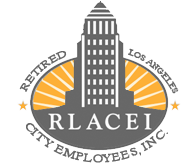
LACERS BOARD UPDATE
By Michael R. Wilkinson, LACERS Commissioner
Email: MikeWilkinson4LACERS@gmail.com
As I discussed in a previous article, LACERS is careful to diversify its investments in many ways including when the investment is made. No one has a crystal ball to know exactly when is the right time to invest in longterm investments such as private equity or private debt, so a careful investor spreads out the investment over time.
The last article detailed a pacing plan for investing in private equity. This article will cover private debt. What is private debt? Private debt is loans made to private companies by non-bank institutions. These are often to borrowers that are companies funded by private equity. It is estimated that 10 to 15 percent of the private equity market is private debt.
There are different types of private debt, but that is beyond what we will be getting to in this article. Private debt is an attractive asset class because it provides an expected return that is greater than traditional fixed income (high-quality corporate or government bonds) with a risk that is less than stocks, but greater than high-quality bonds. The anticipated return on LACERS private credit portfolio is 6.1 percent.
LACERS has increased its allocation of new investments in private credit from $100 million in 2020 to $200 million in 2021, and plans an increase to $375 million in the next three years followed by $250 million in the following year to get to our goal of a 5.75 percent allocation at the end of five years. While this amount looks like it is a huge investment, it must be looked at as just one part of a total fund that now tops $23 billion.
The increases described above consider that there will be calls for additional loan funding as well as distributions as some loans are paid off.
Again, as you have heard from me before, there is no one investment that works in all situations, and a diversified investing plan is the best way to grow our fund for the long term.












